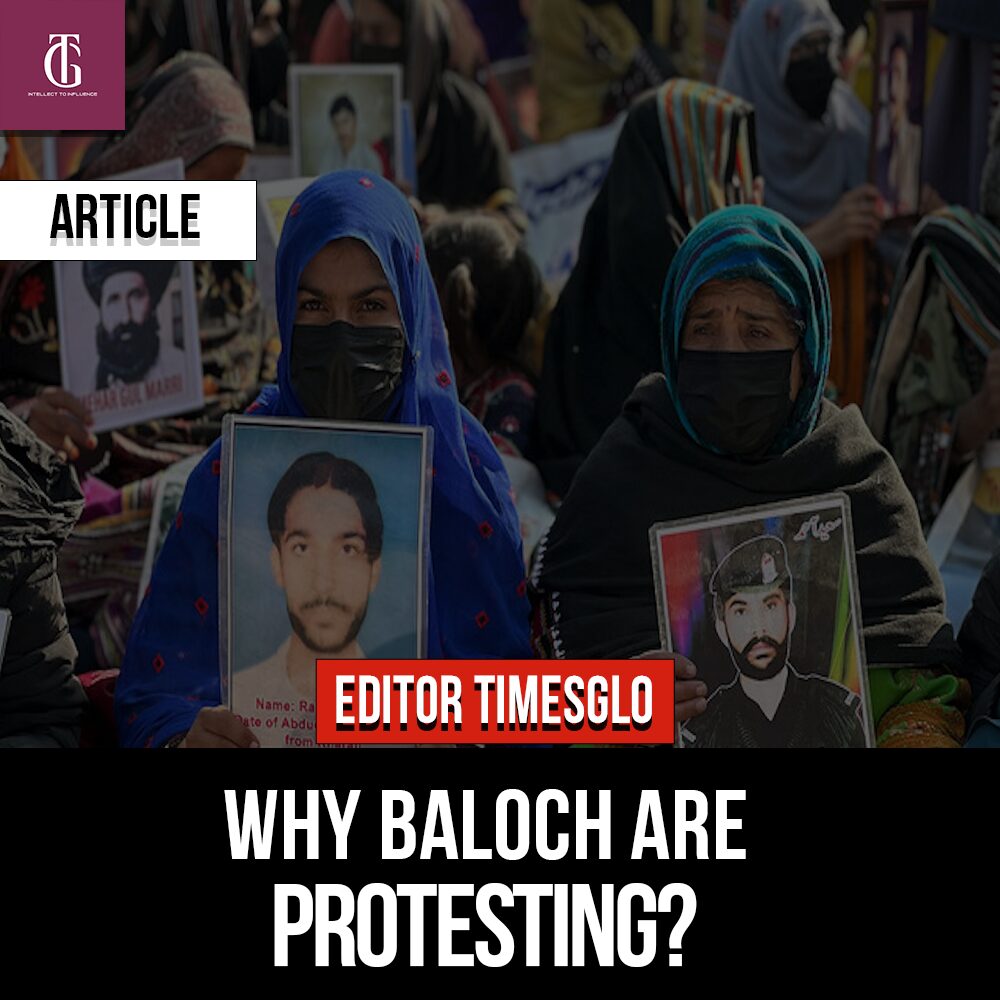
Background of Conflict in Balochistan
Balochistan is the largest province of Pakistan in terms of area. After the independence of Pakistan in 1947 and the accession of Balochistan to Pakistan there has been a protracted conflict in the region. There have been different uprisings in Balochistan funded by India. Recently, different Baloch separatist groups have started a new wave of terror including attacks on military instalments, soldiers, foreigners, and labourers belonging to other parts of Pakistan. Different separatist terror groups operating in Balochistan includes the Baloch Liberation Army (BLA), Balochistan Liberation Front (BLF), Balochistan National Army (BNA), Baloch Students Organization (BSO) Azad among others. In recent years, different attacks have taken place in Balochistan including the attack on a Chinese teachers in University of Karachi conducted by a female suicide bomber Shari Baloch. Another major attack took place in November when fourteen soldiers were killed in an attack at Pasni by the Baloch separatist groups. The conflict has also resulted in enforced disappearances and extra judicial killings of people having connection to separatist groups and in some cases people with perceived links. In the context of ongoing conflict in Balochistan, the recent long-march is going on that has its roots in broader conflict in region but has been sparked by a recent case of extra-judicial killing.
Why Baloch are Marching?
The recent long march of Baloch people led by women in general and particularly by Dr. Mahrang Baloch is sparked due to the extra-judicial killing of a 24 year old Baloch by the name of Balaach Baloch in Turbat. The young person, Balaach was arrested by the counterterrorism police on the 29th October from his house in the Kech district, which is marred by the insurgency. Balaach was presented in front of an anti-terrorism court on the 22nd of November which granted a 10 days of remand to the police for investigation. However, in a turn of events, between the night of 22nd and 23rd November, Balaach was shot dead by the counterterrorism police in what they described as an intelligence based operation. Extrajudicial killing of Balaach sparked a protest in his hometown of Keech with a demand of accountability and investigation against the police. For seven days, protest continued with his body and after that he was buried.
Because of the sit-in and protest on 26th November, a local court ordered the police to file a first investigation report (FIR) against the counterterrorism officials for the extrajudicial killing. The protesters after the sit-in decided to march from Keech to Islamabad against the extra-judicial killing and enforced disappearances. The protest has been lead by Dr Mahrang Baloch under the banner of Baloch Yakjahti Committee (BYK) and other leader including Simmy Baloch. The march continued in form of convey first from Keech to Quetta. From there they moved towards Dera Ghazi Khan, passing through several cities of Balochistan. After that the protest entered moved from Dera Ghazi Khan to Dera Ismail Khan and in the form of a convey reached Islamabad. The protest was able to gather attention of a wider audience because it was led by women and majority of protesters were either women, children or old men.
What can they do next?
In light of the obstacles encountered throughout the Baloch Long March, potential subsequent courses of action may encompass:
The Baloch protestors might be planning to establish communication and dialogue with diplomatic channels and international human rights organizations in order to bring attention to the treatment of Baloch demonstrators. Request support and censure for the measures implemented by the Pakistani government.
Even in the absence of First Information Reports (FIRs) and mobile phone blocking, protestors might be planning to pursue legal recourse to contest their arbitrary detention, mistreatment, and abduction. Advocate for and mobilize legal professionals to represent the Baloch activists.
The Baloch activists might be planning to make use of media platforms to illuminate the injustices endured by the Baloch people by disseminating information about their plight. Leverage social media platforms and issue press releases to mobilize public backing and magnify the perspectives of the impacted families.
They might enhance communal unity and galvanize backing throughout Balochistan and the entirety of Pakistan. Inspire nonviolent demonstrations and assemblies to draw attention to the need for justice, protection of fundamental rights, and an end to enforced disappearances.
They can establish a coalition comprising civil society organizations, including those operating within Pakistan, in order to collectively oppose coerced disappearances and human rights violations. Collaborate with organizations that share your commitment to promoting justice and accountability.
Another option can be engaging with political leaders and parties in Pakistan who share a sympathetic stance towards the cause, imploring them to attend to the issues that concern the Baloch people. Advocate for policy changes and legislative action to prevent further violations of human rights.
Another step forward can be further encouraging the process of documentation and gathering evidence to continue to record incidents of violence, disappearances, and violations of human rights. Gather evidentiary material to substantiate forthcoming legal proceedings and global advocacy endeavors.
Dialogue-Programmed Initiatives Investigate potential channels of amicable discourse with governmental entities in order to effectively grieve the Baloch community. It is imperative to obtain guarantees regarding the safeguarding of fundamental rights and a dedication to an equitable and impartial legal proceedings.
This can also include a call for humanitarian assistant and intervention for protection of human rights of the people of Balochistan. In pursuit of international solidarity, solicit support from various organizations and movements that champion human rights and oppose enforced disappearances. Make connections with individuals who face comparable challenges in order to exchange strategies and experiences.
By integrating legal, diplomatic, and grassroots initiatives, these measures seek to advocate for the fundamental rights of the Baloch community and rectify the injustices they endured throughout the Long March.
Possible hidden agenda
It appears that the state is willing to address all reasonable requests for the resolution of the Balach issue. What is the reason behind the movement’s increasing intensity and why it continues to propagate separatist and balochist ideologies? The Baloch Liberation Army’s (BLA) affiliation with India is another presumption that demonstrates such an aim. Mahrang Baloch’s long march and its goals are further dubious because she is a BLA member’s daughter. Furthermore, the BLA’s recent attack and killing of Punjabi day gamblers in Balochistan raises doubts about whether the issue is really about human rights or if it is only about advancing separatist goals. However, the requests made by the missing people are a real human rights concern. The genocide of the Baloch people has been caused by a number of injustices against them. The demands made during the lengthy march, the human rights abuses, and the denial of residents’ freedom to peaceful protest are all legitimate. Without a doubt, the state of Pakistan has violated the constitution in all respects and in contravention of the law.
Another suspicious act of Mahrang Baloch is that she never condemns the killings of innocent Punjabi and Sindhi labourers. According to her any question to the affiliations of Baloch Liberation Army (BLA) is not an appropriate question to be asked whereas, BLA has not just been targeting state officials but have been specifically targeting any Punjabi workers in Balochistan include teachers, labourers and mere tourists. Balochistan is a very dangerous area for Punjabis to visit, considering the immense amount of hate against them which is promoted by the BLA. It seems like the BLA might be behind this and want to gain benefit of the heat in the public against state sponsored genocides happening in Gaza and Sudan. Even though, there is no doubt that a genocide has been underway in Balochistan for a long time now but the agenda and actions of BLA are still suspicious that whether it is only to get their rights as equal citizens or to challenge the writ and sovereignty of Pakistan. It is speculated to be motivated mainly by the separatist element of the BLA due to which they use the honest sentiments of the oppressed baloch people against the state of Pakistan but the main goal seem to be moving towards a separate state of Balochistan.
Role of Establishment
The Pakistani establishment and the government harbor resentment for the Baloch people. It seems that they have been attempting to negotiate the Baloch. Gulzar Imam Baloch, who was escorted to a table and then turned himself in in front of the establishment, is only one case. Sarfraz Bangulzai, the leader of the Baloch Nationalist Army (BNA), is another example of a recent surrender. However, China’s pressure on Pakistan to assist in peaceful negotiations with the Baloch people is the primary cause of this, not just a show of goodwill or democracy. But ever since Pakistan gained its independence, the State of Pakistan has treated the Baloch people unfairly. Law enforcement brutally attacked the Baloch Long March towards Islamabad, using tear gas and water cannons among other weapons. Hundreds of demonstrators, including women and children, were imprisoned by the government and subjected to abuse and torture. The demonstrators were freed after a day, but they were sent back to Balochistan.
The extrajudicial execution of Balaach Mola Bakhsh and others in Turbat, Balochistan, is said to have been the catalyst for the march. Under the name ‘March against Baloch Genocide,’ the demonstration sought to bring attention to the extrajudicial killings, arbitrary detentions, torture, and forced disappearances that occur in Balochistan.
Violent insurgencies have plagued Balochistan, resulting in forced disappearances and the dumping of dead. The conflict between Baloch nationalist organizations that charge the government of exploitation and the military’s conduct is brought to light in the book. National organizations representing the Baloch people have disputed the thousands of cases documented by the Commission of Inquiry on Enforced Disappearances.
The nation’s security agents are frequently held accountable for extrajudicial executions and forced disappearances. The passage highlights that even Pakistan’s highest courts have admitted to the role played by security forces. The way Baloch protestors are treated differently in Islamabad is perceived as a sign of governmental involvement in these crimes and a reflection of the state’s animosity towards its own people.
The necessity of taking immediate action to address extrajudicial killings and enforced disappearances is emphasized throughout the text. It demands a halt to these practices, the revelation of the whereabouts of the victims, impartial legal proceedings, compliance with global human rights norms, and full compensation for those harmed. It is warned that ignoring these problems will have historical repercussions and draws comparisons to earlier occurrences such as the “fall of Dhaka.”
Meanwhile the state’s behaviour seem to be changing from bitter to bringing the matter on table. This is being motivated by the pressure from Chinese diplomacy and is a good sign for the Baloch and the state of Pakistan to peacefully resolve the matters and give Baloch equal rights as all other citizens of Pakistan. This will help overcome the damage done by ethnic hatred and will bring peace to the situation.
The Baloch student, Dr Zaheer Baloch has been released by the establishment after 5 days of disappearance. And after seven days of unlawful detention, the remaining thirty-four Baloch students are released; during that time, they were subjected to mental torment, and their families were terrified for their safety. However, the demands of releasing all the hostages from the protest and the baloch missing person release has still not been met. This makes the observers and researchers to believe that the situation may escalate leading to a bigger Baloch movement than ever.

Editor Timesglo
Editor can be reached at editortimesglo@gmail.com





